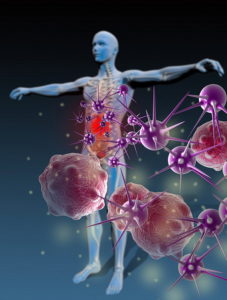 The CDC has presented a report on the 10 leading causes of death in 2016, which accounted for 74% of all deaths that occurred in the US that year, with heart disease and cancer topping the list.
The CDC has presented a report on the 10 leading causes of death in 2016, which accounted for 74% of all deaths that occurred in the US that year, with heart disease and cancer topping the list.
The National Vital Statistics Report was compiled using information from all death certificates filed in the 50 states and the District of Columbia in 2014. According to the findings, the 10 leading causes of death, in rank order, were: diseases of the heart; malignant neoplasms (cancer); chronic lower respiratory diseases; accidents; cerebrovascular diseases (stroke); Alzheimer’s disease; diabetes; influenza and pneumonia; nephritis, nephrotic syndrome, and nephrosis (kidney disease); and suicide.
“Cause-of-death ranking is a popular method of presenting mortality statistics and is a useful tool for illustrating the relative burden of cause-specific mortality, but it must be used cautiously with a clear understanding of the limitations underlying the method,” the researchers wrote in the report.
Of the 10 leading causes, 8 saw significant increases in the number of deaths, led by Alzheimer’s disease, which increased by 10.4% from 2013 to 2014. The other causes that saw large increases in the number of deaths from year to year were: unintentional injuries (4.2% increase); suicide (3.9%); cerebrovascular diseases (3.2%); nephritis, nephrotic syndrome, and nephrosis (2.2%); malignant neoplasms (1.2%); diabetes (1.2%); and diseases of the heart (0.5%). Meanwhile, the number of deaths caused by chronic lower respiratory disease and influenza and pneumonia decreased by 1.4% and 3.1%, respectively.
 Heart disease and cancer were the top two causes of death and accounted for 45.9% of all deaths in 2014. They were the two leading causes of death for both men and women. However, men and women diverged in the ranking of other causes of death. Unintentional injuries were the third-leading cause of death for males, while chronic lower respiratory disease ranked third for women.
Heart disease and cancer were the top two causes of death and accounted for 45.9% of all deaths in 2014. They were the two leading causes of death for both men and women. However, men and women diverged in the ranking of other causes of death. Unintentional injuries were the third-leading cause of death for males, while chronic lower respiratory disease ranked third for women.
In addition, while suicide ranked seventh and chronic liver disease and cirrhosis ranked tenth for men, neither was among the 10 leading causes of death for women. In addition, kidney disease ranked ninth and septicemia ranked tenth for women, but neither were among the top 10 for men.

 Diabetes has been an increasing issue in the United States. While there are already close to 30 million Americans with diabetes, there are far more who have what is being called prediabetes.
Diabetes has been an increasing issue in the United States. While there are already close to 30 million Americans with diabetes, there are far more who have what is being called prediabetes.